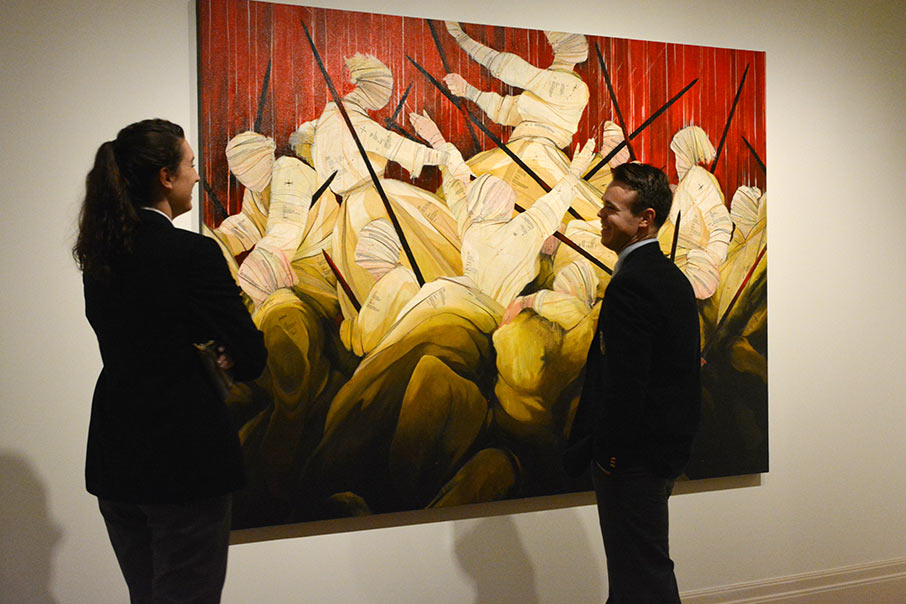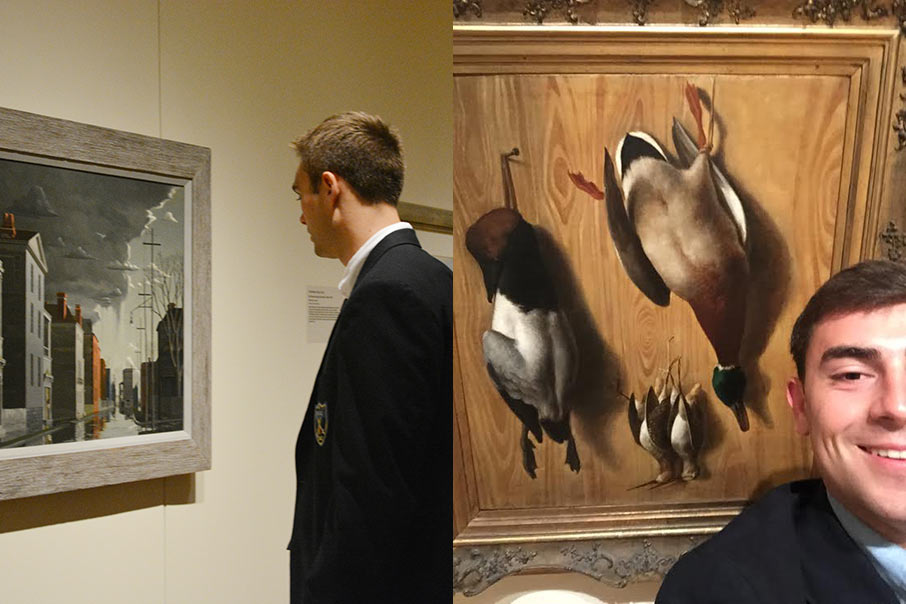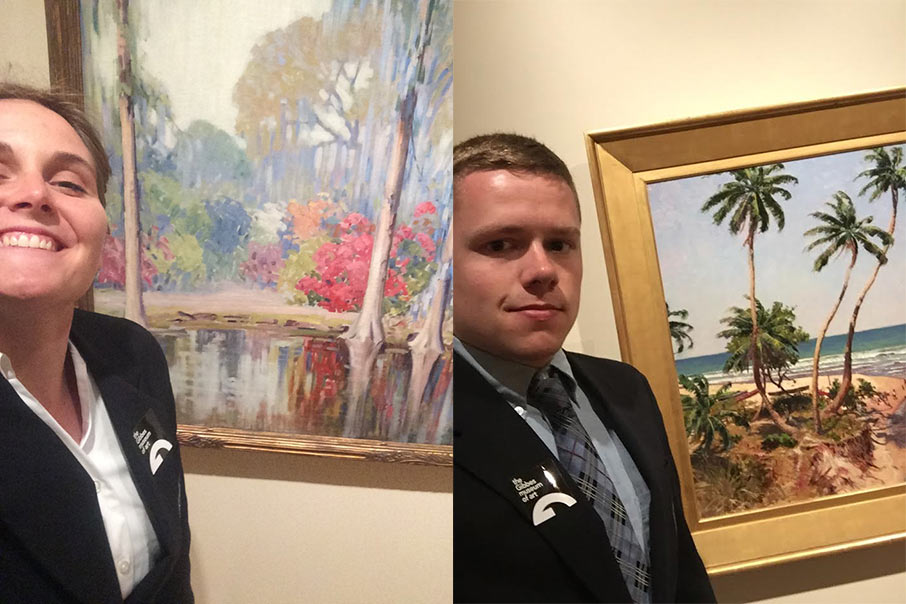When I talk about the Fine Arts program at The Citadel, the response is often one of surprise, then delight. For generations, Art Appreciation and Music Appreciation were the standard beginning and end for cadet arts education. Now, over 300 cadets each semester choose from a dozen arts-related courses such as Forensic Photography, Visual Perception, and Graphic Design. The Fine Arts minor is the second-largest in the humanities. Thousands of cadets and community members have participated in art-related lectures, exhibitions, and performances on The Citadel’s campus. We have initiated research projects on the effects of art on visual perception skills, matched arts interns with galleries, and begun an arts-infused STEAM summer camp. Blue blazers abound at downtown Art Walks. The Citadel is starting to have a seat at the artistic table of Charleston. The linchpin to all of this? Something the Gibbes Museum knows a bit about as well: ACCESS.

Teaching art at The Citadel can be a bit of a one-room schoolhouse. Some students are incredibly developed in their artistic skills and have seen international artistic icons for themselves; others have never set foot in a museum nor do they believe that they can create art in any shape or form. For the latter students, I’ve found it is not necessarily that they do not like art; it is that they do not understand art, often due to lack of access to art education. In my Art Appreciation class, I watch the transformation that happens when that all-access pass is granted. Strange at first and requiring much discussion and exploration, art becomes an oasis and an opportunity rather than an oddity.
Opening the door with a warm invitation makes all the difference, so you can imagine my immense gratitude when the Gibbes’ Curator of Education Rebecca Sailor told me about the new program that grants free museum access to college students on Wednesday evenings. Then Lasley Steever, director of programs and digital engagement, added that there would be new discounted student pricing for special events and I immediately started working to get cadets to the wonderful array of lectures and concerts on the Gibbes schedule. As a former member of the Gibbes’ staff (#GibbesGirlForever), I recognize on a personal and professional level what a special place the Gibbes is so I struggle against timing and budget to bring students to visit the museum. By understanding how crucial that initial access can be, the Gibbes has opened up a new vista that surprises, delights, and transforms.

But this is not just my perception of the situation. Every cadet in my Art Appreciation classes is required to write a paper describing their experience in visiting the Gibbes Museum. Most of these start along the lines of great surprise that Charleston has an art museum at all, much less that Charleston is quite the arts destination. Since the ones this semester didn’t know what the museum looked like before the renovation, I can compare the papers written pre- and post-renovation and share that the mission was indeed accomplished with this bright, peaceful journey through the stunning architecture. Favorite works often include the Veiled Lady by Pietro Rossi, Bombardment of Fort Moultrie by Conrad Wise Chapman, and a still life of ducks and snipe by Charles Fraser, but I love to see surprises among more modern and installation works, too. Cadets write about how much they realized they knew about art once pressed into a real-life rather than classroom situation as they discussed the compositional elements evident in a painting while standing in front of it. Going behind the scenes with Gibbes staff always elicits positive feedback, whether debating the merits of various glues with Chief Preparator Greg Jenkins or viewing daguerreotypes in storage with Director of Collections Zinnia Willits. Others write about the concert they heard performed in the galleries, merging multiple art forms into one memorable experience. Most importantly, nearly all close with an emphatic declaration that they would like to go back and bring someone with them to share in their discovery. Access begets access. Those who see the benefit pave the way for others to join in the journey.

So why does access to an art museum matter for cadets at a military institution? Beyond the immediate benefits of stress relief and a creative outlet, art experiences provide an alternative method to learn skills crucial to The Citadel’s mission to educate principled leaders. Art has a way of reaching beyond words to resonate with students who often don’t expect it. In making art, these cadets have to confront who they are and what they want to become. They also realize that dismissing something before understanding it (“I could have made that”) limits bigger picture thinking. Even grasping that we don’t all see the same image the same way (remember the blue/gold internet dress?) opens their eyes to a wider perspective beyond the individual. Also, with an increasing amount of work being done faster by a computer or outsourced overseas, students armed with creativity and imagination will supersede the redundant. In an evolving economy, art is an ideal way to foster honest introspection and a broader world view, allowing productive conversation and wiser action—hallmarks of grounded leadership.
The Gibbes Museum and The Citadel have both realized that the future of the arts lies not in exclusivity, but rather in opening wide the doors to our venerable institutions. We must build opportunities for access and invite everyone into a more collaborative conversation, encouraging creativity and imagination to flourish in even the most unexpected of places.
—Tiffany Reed Silverman, director of fine arts at The Citadel
Top image: Citadel cadets with Zinnia Willits, director of collections, on a “Behind-the-Scenes” tour in collections storage.
Published May 19, 2017

